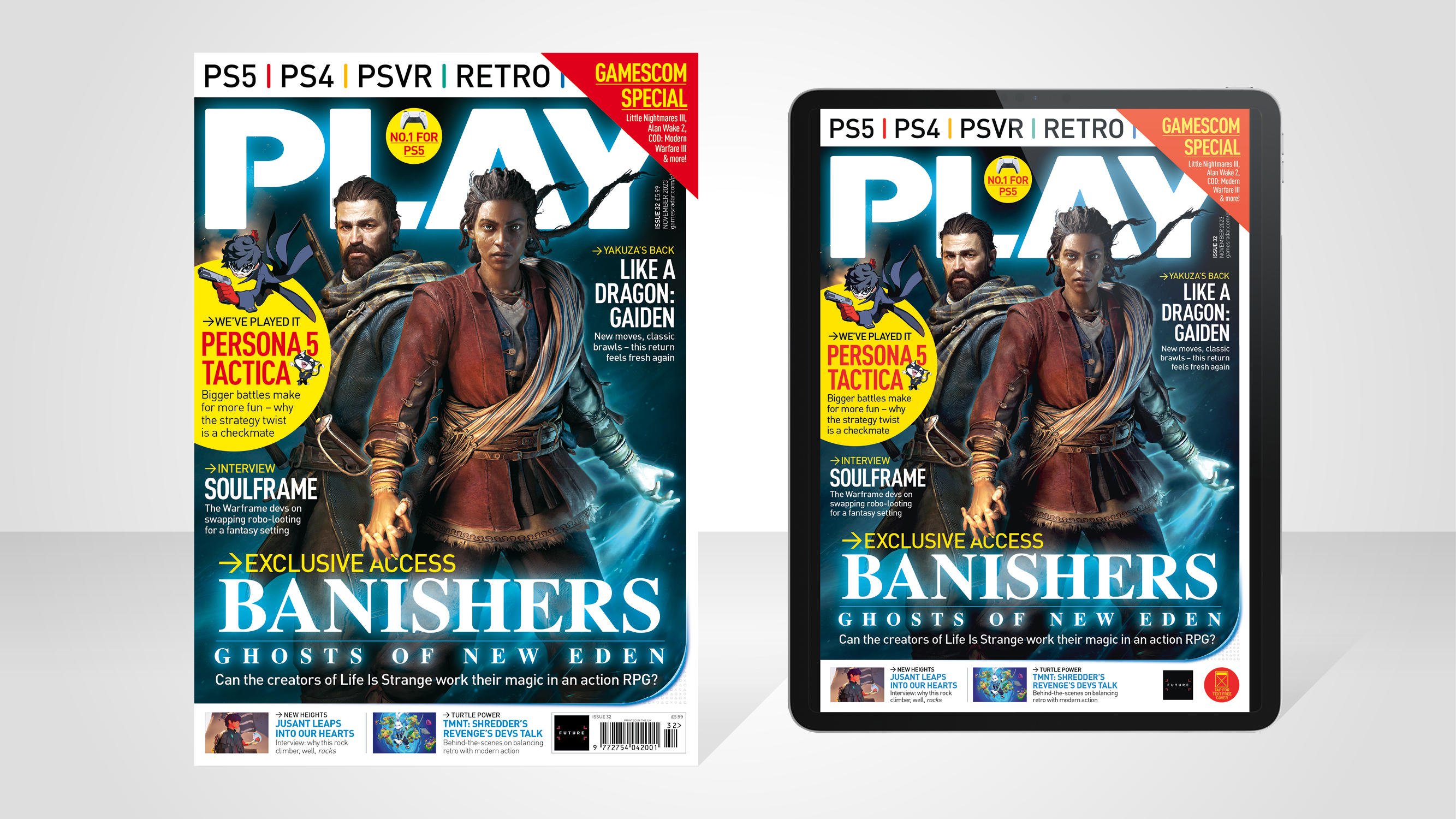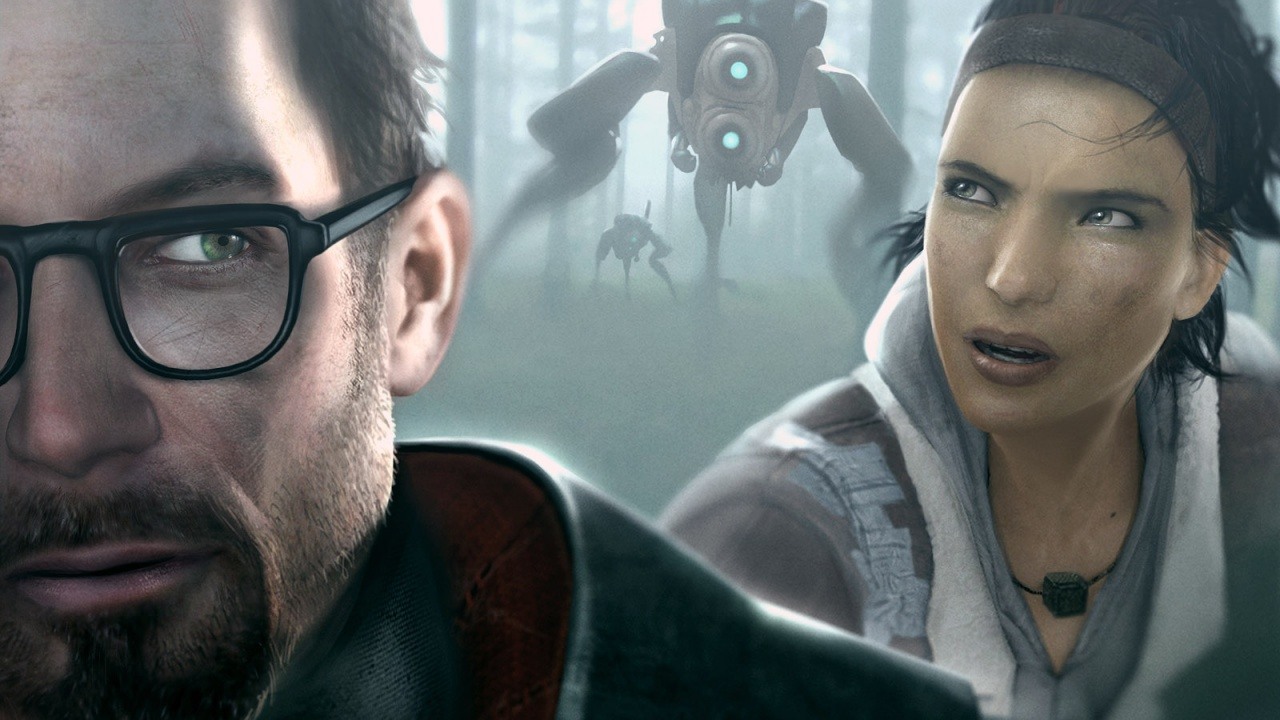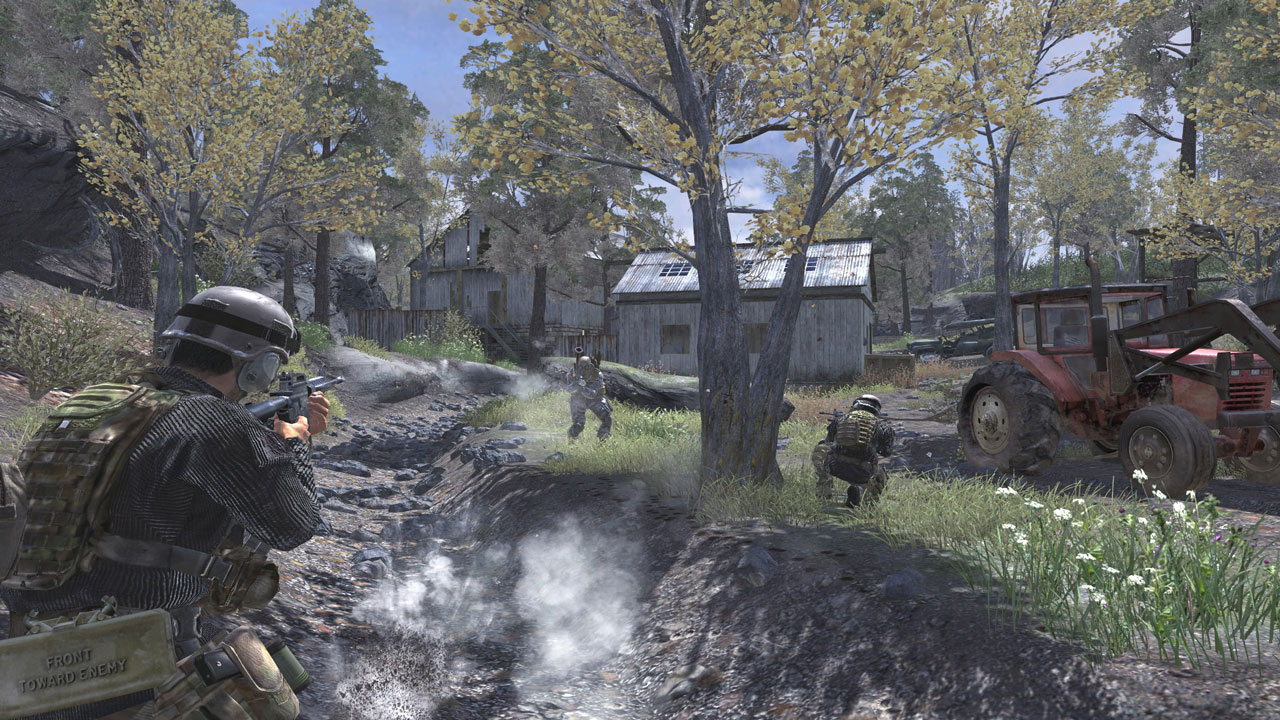10 FPS games that left the rest of the genre scrambling to keep up
Holiday Long Read | Meet the FPS gamechangers that really defined the genre as we know it now

The first-person shooter is a mercurial concept. Is it defined by deathmatches or cinematic campaigns? Battle royale or loot-shooting? The truth is that the genre has never been just one thing. And three decades into its existence, it refuses to stand still – instead strafing and bunny-hopping into new and unexplored territory.
What we can nail down are its punctuation points, the moments when one FPS game has fundamentally altered the rules for what the genre can and can’t be. Grab a coffee, flick off the safety catch, and join us over the page for an explosive celebration.
10. Doom


This feature originally appeared in Play Magazine. For more great features, interviews, and more delivered to your digital device or doorstep, subscribe to Play Magazine.
Publisher: Bethesda Softworks
Developer: ID Software
Released: 1993
In 1993, Johns were poised to change the world. By devising a groundbreaking engine that could conjure both vertical space and a suite of garish colours, John Carmack took 3D gaming beyond simple mazes for the first time. John Romero, meanwhile, designed levels that made the player feel like a rat in a trap, introducing both speed and horror into the fundamental DNA of the genre. This may be the final entry on our list, but know this: there is no FPS without Doom. Jettisoning story and forefronting demons inspired by their games of D&D, Id Software set a breakneck pace for peers to follow
9. Medal of Honor

Publisher: EA
Developer: Dreamworks Interactive
Released: 1999
It’s hard to imagine a time when the DualShock controller was an innovation, and not every PlayStation owner had access to two thumbsticks. It’s even harder to go back and play an FPS which straddled that period, and suffered as a result of those limitations. Holding down a shoulder button to steer your rifle? It’s hardly the stuff Saving Private Ryan was made of. Yet other parts of Medal of Honor, like its undercover sequences and mournful score, shaped the tone of war shooters for decades to come. And it left the PlayStation audience hungry for more PC-style first-person action.
8. Borderlands

Publisher: 2K
Developer: Gearbox Software
Released: 2009
Sign up to the GamesRadar+ Newsletter
Weekly digests, tales from the communities you love, and more
Bungie has Gearbox to thank for laying down the blueprint for the loot-shooter long before Destiny took its haphazard route to the top of the pile. Strange as it is to imagine now, nobody had ever successfully applied the RPG levelling and random number generation of Diablo to a different genre before. The four co-op player roles in Borderlands mapped roughly to traditional D&D party positions (tank, berserker, ranger, mage) but now benefitted from the immediacy and unpredictability of first-person action. The format might be a little tired today, having been copied in The Division, Warframe, and Outriders, to name but a few. But that moreish loop cannot be denied
7. Titanfall 2

Publisher: EA
Developer: Respawn
Released: 2016
While never a particularly big seller – that honor would go to its battle royale spin-off, Apex Legends – the Titanfall series has nonetheless been hugely influential on other first-person shooters. The former Infinity Ward team at Respawn adapted Mirror’s-Edge-style parkour for combat by slowing it down, allowing you to wallrun and squeeze off a handful of choice shots in the same motion, and proving things don’t have to go ever-faster to be more exciting. A slew of Call of Duty games in the 2010s followed suit, and you can still feel Titanfall’s flow in the likes of Warzone today. As a bonus, Titanfall 2 includes one of the best shooter campaigns ever made
6. Half-Life 2

Publisher: Valve
Developer: Valve
Released: 2007
Portal might have been the surprise hit in The Orange Box in 2007, but Half-Life 2 was no less electrifying as it made its console debut in the same package. City 17 was suffocating from the moment you stepped off the train, a place visibly crushed by the oppressive alien Combine and its propagandist collaborator, Dr Breen. But it was also freeing, every cardboard box and coffee cup elevated from the status of background prop to real physics object you could pick up and throw around. Suddenly, the decision whether to obediently bin a soda can or chuck it in a cop’s face became an expressive choice, and that thrill scaled up with the discovery of the Gravity Gun – both a deadly weapon when propelling radiators and toilets at high velocity, and a tool for solving puzzles on the outskirts of Valve’s ramshackle eastern European metropolis.
On the subject of expressions, no Half-Life 2 player can forget the facial contortions of Alyx Vance, your on-and-off companion throughout the game and its two expansion episodes. Valve’s expert animators pulled Alyx’s muscles this way and that in such a way as to mimic human connection, and by god it worked, tricking our brains into caring in a way developers have reached for ever since. Booker and Elizabeth in Bioshock Infinite? They’d never have lived to hate each other without the example of Gordon and Alyx. And without the environmental interactivity of City 17, it’s very tricky to imagine Dishonored, Prey, or Deathloop. In the absence of the latter, we’d be down a PLAY 10/10.
5. Doom (2016)

Publisher: Bethesda Softworks
Developer: Id Software
Released: 2016
For years, Id Software was stumbling in the dark when it came to rebooting Doom – literally living in the shadow of the gloomy Doom 3, and struggling to square its rip-and-tear legacy with the scripted, story-driven model popularised by Call of Duty. Things finally started to make sense when the studio came up with the glory kill, a melee button press that would reward you with a gratuitous animation of a cacodemon’s eye popping out when you drew in close. More than showy spectacle, the glory kill ushered in a new mode of engagement for first-person shooters.
Rather than hanging back and ducking behind cover, as they had been doing since Halo and Call of Duty introduced recharging health, players were suddenly encouraged to fire forwards when under pressure, exploding an opponent in exchange for a shower of health pickups. What’s more, the glory kill formed just part of a deadly dance that fans of Doom’s 2016 reboot and recent sequel have come to adore. Id built single-player arenas that resembled the flowing multiplayer maps of Quake 3, and taught you a cardinal rule – that to stand still was to embrace death. The Doom Slayer circled his opponents like a shark, double jumping and dashing out from under incoming rockets in order to take the upper hand. Along with Titanfall, Doom inspired a new focus on movement in the FPS genre that has continued to this day, and is evident in everything from Apex Legends to indie hits like Neon White and Ghostrunner.
4. Call of Duty 4: Modern Warfare

Publisher: Activision
Developer: Infinity Ward
Released: 2007
The early COD games went in for spectacle, but Modern Warfare was something else: the invention of full-on first-person cinema. The sell was a little like Cyberpunk’s braindancing: the forbidden pleasure of occupying perspectives in the most extreme circumstances imaginable. Where else could you be executed in front of a TV audience, or crash-land at the epicentre of a nuclear blast, then walk away for a cup of tea afterwards? Modern Warfare’s story defined the tightly-controlled pace of the FPS going forwards; if you’ve played any Call Of Duty campaign in the past decade, then you know exactly how big Infinity Ward’s footprint is.
3. Far Cry 2

Publisher: Ubisoft
Developer: Ubisoft Montreal
Released: 2008
Before Ubisoft’s experimental sequel to a German jungle shooter, open worlds were the preserve of RPGs and Grand Theft Auto. First-person shooters, by contrast, were invariably set in shiny corridors of varying widths. Far Cry 2 changed all that, setting you loose in a sprawling East African country wracked by civil war. Jeeps and hang gliders made the scale manageable (not to mention beautiful), while the freedom of movement meant you could approach an outpost from any angle. Later Far Cry games eased up on the misery and malaria pills in favor of a chaotic holiday vibe that only made the series even more popular and influential.
2. Overwatch

Publisher: Blizzard Entertainment
Developer: Blizzard Entertainment
Released: 2016
Team Fortress 2 did the cartoony team shooter thing first, but Blizzard’s masterstroke was to pull over the MOBA’s focus on individuals and ultimates. Every character in Overwatch is a planet unto themself, with a unique set of skills to master, a fleshed-out backstory, and a complementary role to play on the field alongside their counterparts. It’s a world away from the interchangeable skins and avatars that populated the multiplayer shooters of yore – and a setup that opened the door for much better and broader representation in a genre that had always centred on gruff white blokes
1. PUBG: Battlegrounds

Publisher: Krafton
Developer: PUBG Studios
Released: 2018
Warzone couldn’t have pulled us collectively through lockdown if PUBG hadn’t already set the template for the FPS as battle royale. It’s janky, but it’s all here: the parachute jump with 99 other players; the encroaching circle; the too-quiet ghost towns that promise both the possibility of life-saving gear and life-ending enemy encounters. The genius was to bottle the survival horror of DayZ in a format that always produced a climax, ending on a dramatic high that capitalised on all that tension rather than letting it dissipate into nothing. If there’s a more compelling shape for multiplayer shooting, we’ve yet to see it.
This feature originally appeared in Play Magazine. For more great features, interviews, and more, subscribe to Play Magazine.
Jeremy is a freelance editor and writer with a decade’s experience across publications like GamesRadar, Rock Paper Shotgun, PC Gamer and Edge. He specialises in features and interviews, and gets a special kick out of meeting the word count exactly. He missed the golden age of magazines, so is making up for lost time while maintaining a healthy modern guilt over the paper waste. Jeremy was once told off by the director of Dishonored 2 for not having played Dishonored 2, an error he has since corrected.



